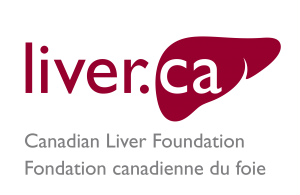Galactosemia
Galactosemia
Galactosemia is a rare hereditary disease that can lead to cirrhosis in infants, and early, devastating illness if not diagnosed quickly. This disease is caused by elevated levels of galactose (a sugar in milk) in the blood resulting from a deficiency of the liver enzyme required for its metabolism (breakdown).
Cause
Galactosemia is hereditary. To have the disease, a child must inherit the tendency from both parents. The incidence of the disease is approximately 1 in 20,000 live births. For each pregnancy, in such a family, there is a 1 in 4 chance a baby will be born with the deficiency. Because of the potentially disastrous effects of late diagnosis, many provinces have mandatory neonatal screening programs for galactosemia.
Symptoms
The disease usually appears in the first few days of life following the ingestion of breast milk or formula. Vomiting, liver enlargement, and jaundice are often the earliest signs of the disease, but bacterial infections (often severe), irritability, failure to gain weight, and diarrhea may also occur. If unrecognized in the newborn period, the disease may produce liver, brain, eye and kidney damage.
Diagnosis
Galactosemia can be diagnosed through blood tests. The disease is detected by measuring the level of enzyme in red blood cells, white blood cells or liver. Affected patients have no enzyme activity; carriers (parents) have intermediate enzyme activity (about half the normal level). A galactose tolerance test should never be done, as it may be harmful. Affected infants who ingest galactose will excrete it in large quantities in their urine where it can also be detected. If the infant is vomiting, and not taking milk, the test can be negative. If the disease is suspected, the diagnosis should be confirmed by blood testing.
Treatment
Treatment is based on the elimination of galactose from the diet. This may be done in the early neonatal period by stopping breast feeding and by the administration of diets which contain no lactose or galactose, (NutramigenR, PregestimilR). This diet should be strictly followed, and continued for years, and possibly for life. The red blood cell levels of galactose or its metabolites (galactose-1-phosphate) may be used as a monitor to gauge the adherence to the diet and restriction of galactose. It is also recommended that mothers of affected infants be placed on a galactose-free diet during subsequent pregnancies. This may somewhat modify symptoms present at birth. With early therapy, any liver damage which occurred in the first few days of life will nearly completely heal.
Galactosemia should be considered in any jaundiced infant because of beneficial effects of early dietary restriction.
Support
National Help Line:
This support resource gives you and your loved one somewhere to turn for answers after diagnosis, helps you understand your disease, and provides you with the resources you need. You can call 1 (800) 563-5483 Monday to Friday from 9 AM to 5 PM EST.
The Peer Support Network:
This is a national network of people living with liver disease that have offered to share their experiences with others. It was developed by the Canadian Liver Foundation as a means to link Canadians like you who have a family member who has liver disease, who care for someone who suffers from liver disease, or who have been diagnosed with a liver disease, to talk about your concerns with a peer in a similar situation.
If you would like to be connected with a Peer Supporter in your area, or would like to join the Peer Support Network, please fill out the Peer Support Network Sign-up Form.
Help us help you!
If you are not satisfied with the information you just read or any information on our website, please take a moment to send us your comments and suggestions on the type of content you would like to find on liver.ca. Please include the page you are commenting about in the subject line of your email.



